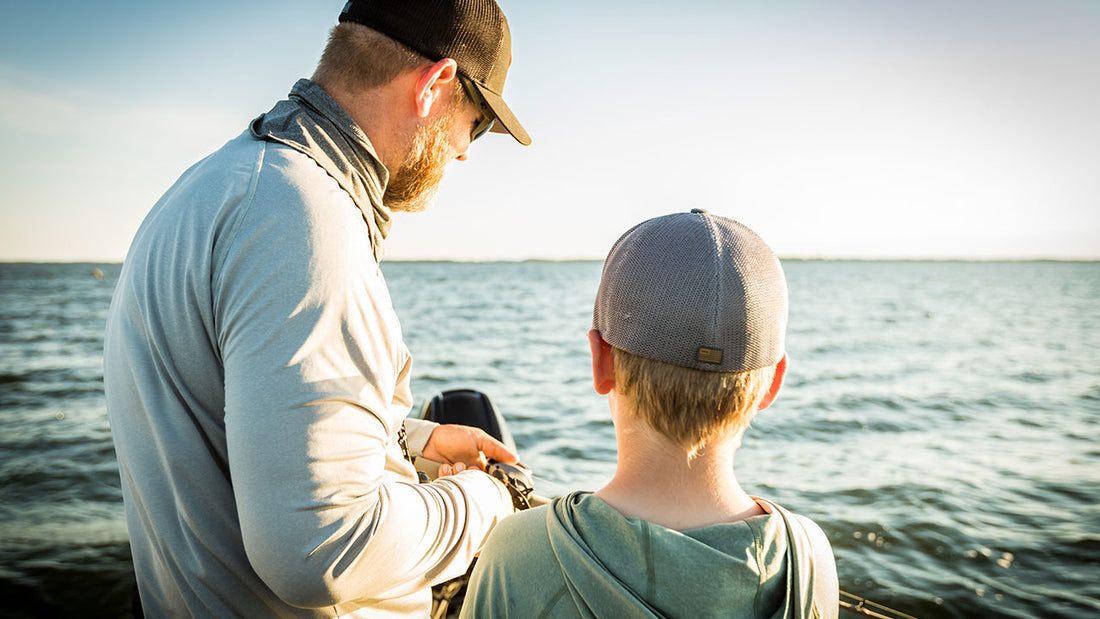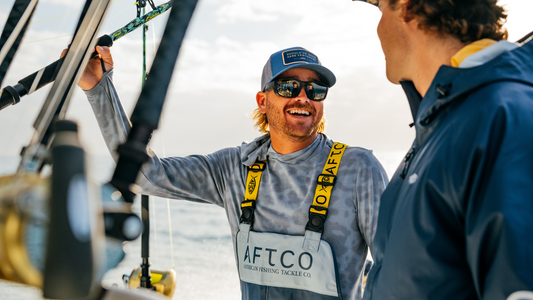
Lessons Learned From Early 30x30 Efforts - Proceeding Nationally
A Saltwater Sportfishing Perspective for U.S. Fisheries, 30x30 and MPA Expansion
This article is 2 of 2 and covers 30x30 policy. Article 1 of 2 is on no-fishing MPA research.
In January 2021, President Biden issued an executive order intended to conserve at least 30% of America’s lands and waters by 2030. It signaled U.S. desire to participate in the global 30x30 initiative.
California became the early testing ground for 30x30 implementation, one which ended in a failed attempt to pass California Assembly Bill 3030. This article explores the California perspective and experience in hope the rest of the country can learn from a process – one which created confusion, chaos, and distrust. This was the result of anglers and other resource users not being included in the process early on.
Instead the process focused on pushing AB 3030 through from a one-sided perspective. It included little definition or understanding of the needs of the public which interacts with our shared ocean resources. The bill also failed to recognize successful fisheries management measures already in place.
A full examination of what's behind misleading confidence in No-Fishing Marine Protected Areas (MPAs) explores the science supporting the conclusion that U.S. based no-fishing MPAs do not increase fisheries productivity, and current, proven fisheries management tools are far superior in achieving that goal.
Here we focus on various perspectives, and why those are needed to work together in order to conserve 30% of our lands and waters by 2030. Recreational anglers, as other U.S. natural-resource users, are looking forward to a 30x30 plan which meets the needs of both our planet and its inhabitants. The saltwater recreational fishing community is hopeful the path set forth by the Biden Administration will continue. An inclusive approach is detailed in principles five and six in Conserving and Restoring America the Beautiful. The initial phase of this federal effort provides hope this approach to 30x30 will in fact have a positive impact on biodiversity and support our nation’s 55 million anglers.

The Recreational Fishing Public Supports Marine Conservation
It took until 1850 to reach 1 billion people on this earth. Today we approach 8 billion. During our time on the water, anglers bore witness firsthand to the impacts of the human population explosion.
As the original marine conservationists, recreational anglers understand the need to protect and conserve our fish populations and the habitat they depend on. Without recreational fishing, fisheries conservation would virtually cease to exist. Through federal excise taxes on fishing equipment and motorboat fuel, fishing license fees and direct donations, anglers contribute nearly $1.5 billion annually to fund fisheries conservation and habitat restoration.
We support 30 by 30 policies that recognize hunting and fishing as well-managed and sustainable activities that are in harmony with other management goals. We also believe, done properly, 30x30 provides an excellent opportunity to benefit both nature and anglers.
The Value of No Fishing MPA’s Has Been Oversold
The value of no-fishing MPAs to fisheries is being oversold by no-fishing MPA advocates. Nowhere is this more evident than in California and in particular, within its 2020 30x30 effort as AB 3030. After failing to make it out of the California legislature, it was quickly reincarnated as Executive Order N-82-20 by Governor Newsom. While inclusive on its face, California anglers have continued to see such processes hijacked in such a way as to limit access otherwise guaranteed under the state's Constitution.
The original bill failed in committee in large part because resource users, including anglers, were not a part of the process. Recreational anglers were not afforded a legitimate voice to counter the perspective of no-fishing MPA advocates. In fact, there was a conscious effort to exclude anglers.
We learned about the legislative effort only after it was introduced into the first California legislative committee. The unfortunate reality of that overreach and inappropriate process in California is an erosion of trust and the ability for various groups and government entities to work together to build the best version of 30x30 possible.
Overstating the value of MPAs to fisheries, especially those which allow no recreational fishing access, presents an unreasonable and unnecessary burden on the over 10 million saltwater recreational anglers in the U.S. It also disrupts the 487,000 jobs and $73.8 billion in sales impact saltwater recreation fishing has, as estimated by NOAA Fisheries in 2017.

A Matter of Perspective: Conservation vs. Preservation
To better understand the MPA debate, it is essential to be aware of two divergent perspectives on conservation which operate with very different outlooks and goals:
Preservation Perspective
No-fishing MPA advocates are often guided by a preservation perspective. This view is derived in part by hypothetical, symbolic, academic, and philosophical ideologies in the absence of much outdoor experience. It suggests a belief humans are separate from nature and nature should be left alone. The context is that we could and should be content just to look at nature — simply knowing it exists, having no real need to interact with the wild.
We as anglers think no-fishing MPA advocates guided by this philosophy find it difficult to approach 30x30’s 30% conservation goal rationally. An example of this can be found in the legislative defeat of California’s AB 3030 after failing to recognize marine protections already in existence.
Conservation Perspective
On the other hand, anglers consider MPAs from a conservationist perspective, one which comes in large part from real-world on-the-water experience. It is not enough for us to simply see nature from a distance.
We want to interact as part of the natural world to meet nature's challenges, revel in her ability to sustain those that do, and to catch her fish and enjoy the most basic form of success on earth.
Interacting with nature in this direct way is part of who we are as human beings, tied to our histories, experiences and relationships with our family and friends. We believe the opportunity for direct contact, whether practicing catch and release, or harvesting sustainable protein from the sea, provides our connection to nature and guarantees our commitment to help conserve it for future generations.
Thus, sustainable fisheries, fish habitat and populations, and access to them are the key components of the conservation perspective — a perspective shared by many marine scientists. A number of leading fisheries management scientists and retired NOAA fisheries managers issued a note of caution in an open letter to congress: ‘30x30’ Will Make Fisheries Management Less Flexible.
Moving 30x30 Forward with Recreational Hunting and Fishing
The Sportfishing Community Supports 30x30 Implementation Meeting These Guidelines:
- Recognizes the positive role that fishing plays in conservation.
- Defines protected areas that allow for well-managed and sustainable wildlife-dependent activities.
- Accounts for existing protected areas and other management strategies that achieve biodiversity conservation in measuring progress toward stated goals.
- Utilizes targeted, science-based conservation measures developed through a stakeholder-driven process to address biodiversity threats.
- Establishes roles and authorities for the entities charged with carrying out 30x30.
A full list of the sportfishing community's perspective can be found at huntfish3030.com.
Moving Ocean Issues Forward Productively
We all want to ensure healthy ocean ecosystems with robust saltwater fish populations far into the future. Rather than dispute whether an ocean angler with a single hook and line should be restricted from access to a given area, rational legislators and reasonable members of the environmental and sportfishing communities should work together to plan the best 30x30 possible. It is encouraging this type of open and inclusive 30x30 process is now taking place in D.C. and in several states where the users and others potentially impacted are being brought into the process early.
California is an exception. As above, Washington D.C. and states can learn how NOT to implement 30x30 California style. America the Beautiful’s early effort by the Biden administration takes a far more inclusive approach. It is building back trust and hope all Americans will have reasonable access to public waters in the future. This is evidenced in Principle #5: “Pursue Conservation and Restoration Approaches that Create Jobs and Support Healthy Communities” and Principle #6: “Honor Private Property Rights and Support the Voluntary Stewardship Efforts of Private Landowners and Fishers.”
Creating Additional Habitat
In addition to working together on how best to protect our water's exceptional biodiversity, we should work to create additional habitat supporting biodiversity. For years, ocean anglers have supported seagrass restoration projects which improve the health of our marine wetlands. We have also restored numerous oyster beds and have built artificial reefs.
Artificial reefs were once thought of as only attracting fish, now numerous scientific studies and examples — including Liz Hunter's A Review of California’s Artificial Reefs — illuminate how artificial reefs also create additional fish through increased biodiversity and habitat associated with a new reef. See here for 25 examples of more studies supporting this, or visit IGFA.com, or the CCA National website.
In fact, studies reveal artificial reefs can be more productive than natural reefs. It's time to take another look at artificial reefs as a real opportunity to support and create needed biodiversity and habitat.
In the meantime, the sportfishing community continues to contribute more than a billion dollars annually to conservation via license fees, permits and excise taxes. We will continue to champion catch-and-release and the use of circle hooks with billfish and other fisheries. Increased post-release survival rate with circle hooks is well established. We also continue to work with saltwater hatchery efforts aimed at helping our planet's oceans support specific fish stocks as needed.
A Final Word
We have provided an example of how not to do 30x30 as demonstrated by California's failed AB 3030 effort, along with a positive, more balanced example seen in the early stages of the Biden administration's America the Beautiful program.
We hope this effort will prove to be a valuable resource -- one which will help all of us on the way to the best 30x30 plan possible. If you're a conservation-minded saltwater angler, we hope you're supporting local fishing conservation group or club.
Additional information on 30x30 can be found at www.huntfish3030.com. Please stay up to date on fishing access issues and other 30x30 developments at Keep America Fishing.
This is article 2 of 2 in our in-depth 30x30 series.
1. No-Fishing MPAs Are Not the Solution
2. Lessons Learned From Early 30x30 Efforts - Proceeding Nationally





